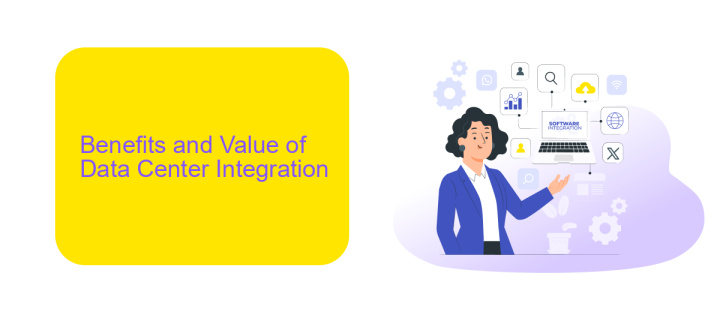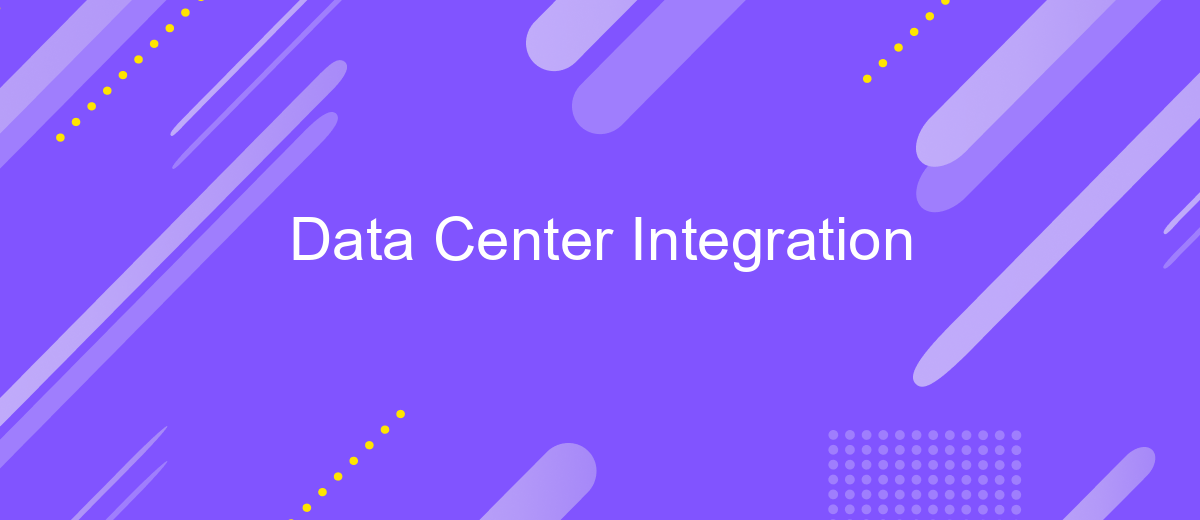Data Center Integration
Data center integration is a critical process that combines various IT systems and software applications into a unified, efficient, and scalable environment. This integration enhances operational efficiency, reduces costs, and improves data management. As businesses increasingly rely on digital infrastructure, understanding the intricacies of data center integration becomes essential for maintaining competitive advantage and ensuring seamless operations.
Data Center Fundamentals and Key Concepts
Data centers are the backbone of modern IT infrastructure, providing the necessary environment for computing resources to operate efficiently. They house servers, storage systems, networking equipment, and other critical components that support business operations and services. Understanding the fundamentals of data centers is crucial for effective integration and management.
- Servers: The primary computing units that perform data processing tasks.
- Storage Systems: Devices that store and manage data, ensuring availability and reliability.
- Networking Equipment: Routers, switches, and firewalls that facilitate communication between devices.
- Power and Cooling: Systems that maintain optimal operating conditions for hardware.
- Security: Measures to protect data and infrastructure from threats.
Integrating various systems within a data center can be complex, requiring specialized tools and services. ApiX-Drive, for instance, simplifies the process by enabling seamless data transfer between applications and systems. This service helps automate workflows, reduce manual intervention, and enhance operational efficiency, making it an invaluable asset for data center integration projects.
Benefits and Value of Data Center Integration

Data center integration offers numerous benefits, including increased efficiency, cost savings, and enhanced scalability. By consolidating multiple systems and applications into a unified infrastructure, organizations can streamline operations and reduce redundancy. This integration allows for better resource utilization, leading to significant cost reductions in both hardware and maintenance. Additionally, it provides a scalable solution that can grow with the organization, ensuring that IT infrastructure can adapt to changing business needs.
Another key advantage of data center integration is the improved data management and security it offers. Centralized data storage and processing mean that organizations can implement more robust security measures, protecting sensitive information from potential threats. Tools like ApiX-Drive facilitate seamless integration by connecting various applications and automating workflows, further enhancing operational efficiency. By leveraging such services, businesses can ensure that their data center integration is not only effective but also future-proof, providing long-term value and supporting ongoing digital transformation efforts.
Challenges and Barriers in Data Center Integration

Integrating data centers presents a multitude of challenges and barriers that organizations must navigate. One of the primary obstacles is the complexity of merging different systems and technologies, which often requires significant time and resources. Additionally, ensuring data security and compliance with regulations is a critical concern, as any vulnerabilities can lead to severe consequences.
- Compatibility issues between legacy systems and new technologies
- High costs associated with infrastructure upgrades and maintenance
- Data security and regulatory compliance
- Downtime and disruption during the integration process
- Lack of skilled personnel to manage the integration
Despite these challenges, solutions like ApiX-Drive can facilitate smoother data center integration by providing automated workflows and seamless data transfers. This service helps bridge the gap between disparate systems, reducing manual efforts and minimizing errors. By leveraging such tools, organizations can overcome many of the barriers associated with data center integration and achieve a more cohesive and efficient IT environment.
Methods and Best Practices for Data Center Integration

Integrating a data center involves multiple steps and best practices to ensure efficiency, security, and scalability. A well-thought-out integration strategy is crucial for seamless operations and to avoid potential pitfalls.
First, it's essential to conduct a thorough assessment of the existing infrastructure. This includes evaluating hardware, software, network configurations, and security protocols. Understanding the current setup will help identify areas that need improvement and ensure compatibility with new systems.
- Plan and document the integration process meticulously.
- Utilize automated tools like ApiX-Drive for seamless data transfer and integration.
- Implement robust security measures to protect sensitive data.
- Ensure regular backups and disaster recovery plans are in place.
- Monitor performance continuously to identify and resolve issues promptly.
Effective data center integration also involves collaboration between different teams, including IT, security, and operations. Using services like ApiX-Drive can simplify the integration process by automating data synchronization and reducing manual intervention. By following these best practices, organizations can achieve a smooth and efficient data center integration.
Case Studies and Real-World Examples
One notable case study involves a leading e-commerce company that integrated its data center with multiple cloud services to enhance operational efficiency. By leveraging ApiX-Drive, the company was able to seamlessly connect various applications and automate data transfer processes. This integration not only reduced manual workload but also ensured real-time data synchronization, leading to more accurate inventory management and improved customer service.
Another example is a financial institution that integrated its on-premise data center with third-party analytics platforms. Using ApiX-Drive, the institution automated the data flow between its servers and external analytics tools. This allowed for faster data processing and more insightful financial reporting. The integration also enabled the institution to quickly adapt to market changes and make data-driven decisions, ultimately enhancing its competitive edge.
FAQ
What is Data Center Integration?
Why is Data Center Integration important?
How can automation benefit Data Center Integration?
What challenges can arise during Data Center Integration?
How can ApiX-Drive help with Data Center Integration?
Do you want to achieve your goals in business, career and life faster and better? Do it with ApiX-Drive – a tool that will remove a significant part of the routine from workflows and free up additional time to achieve your goals. Test the capabilities of Apix-Drive for free – see for yourself the effectiveness of the tool.

